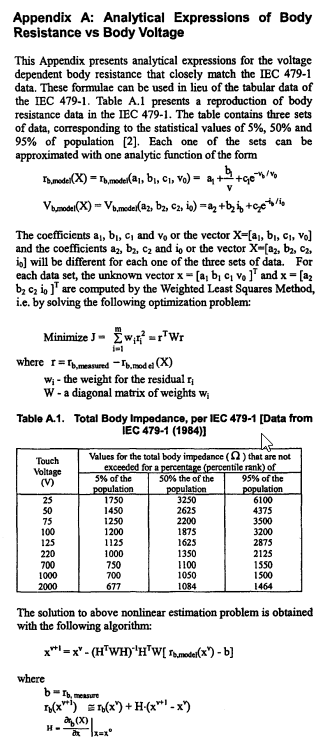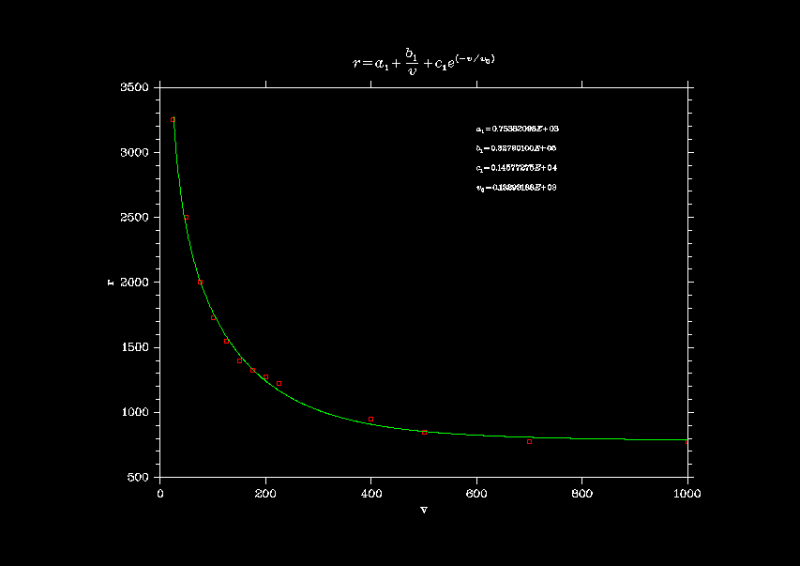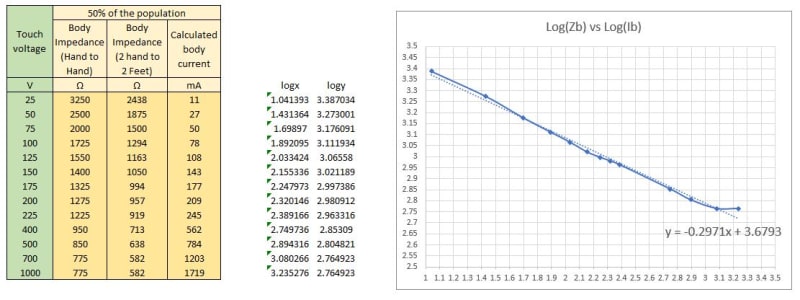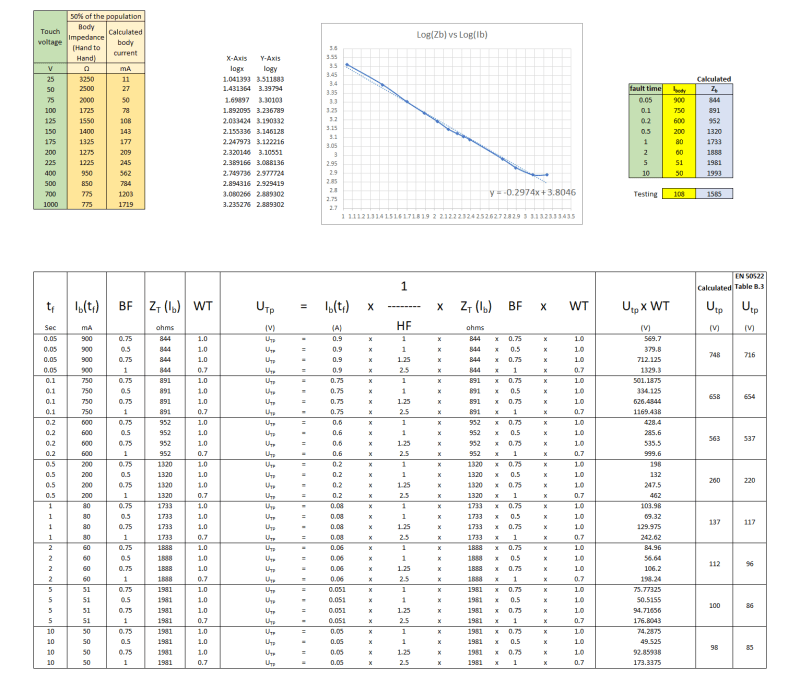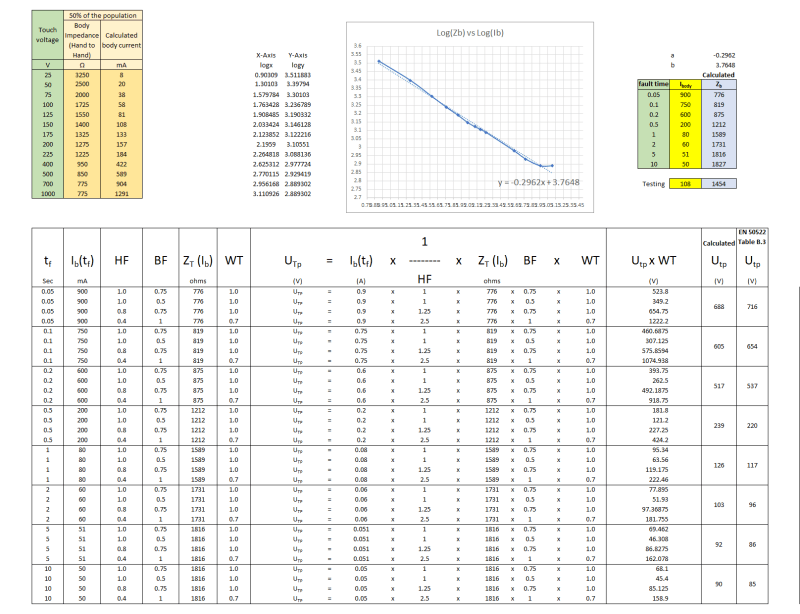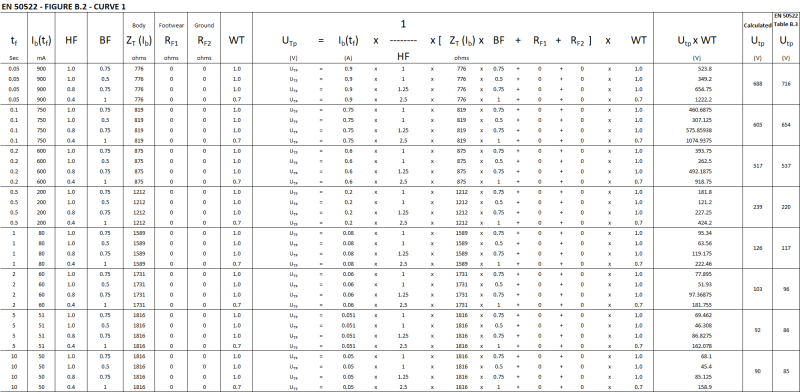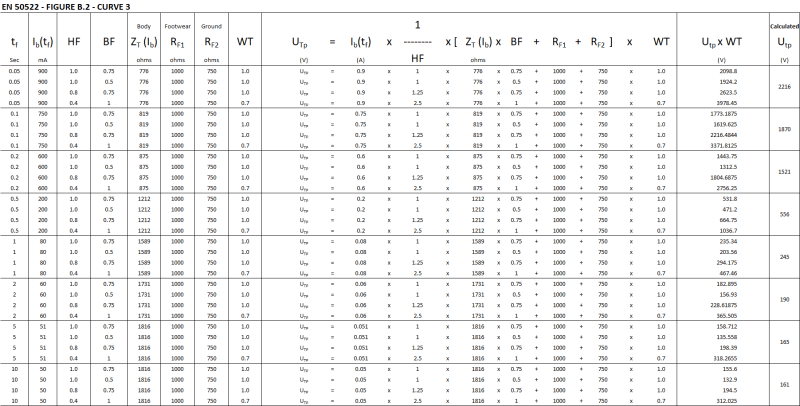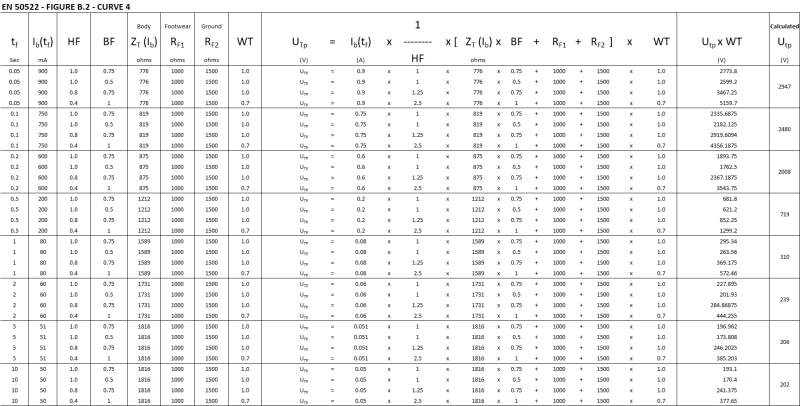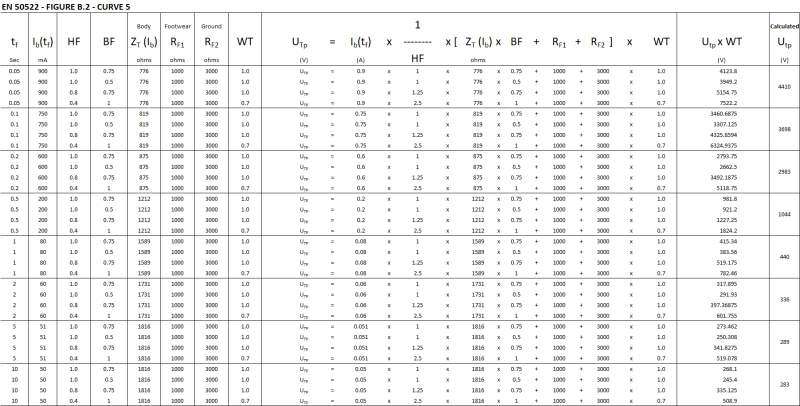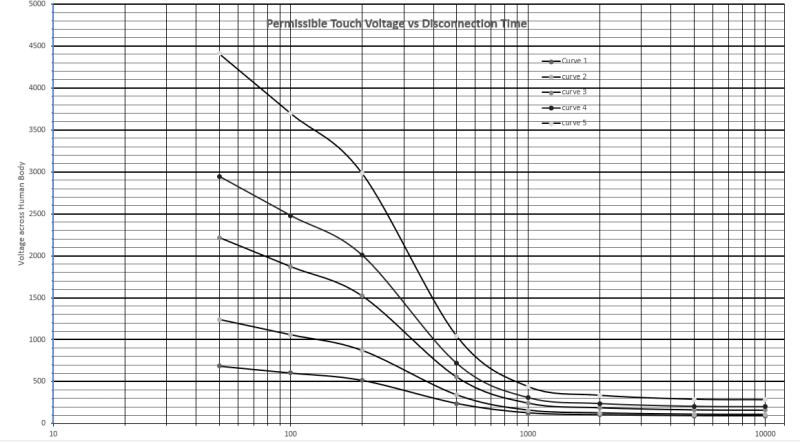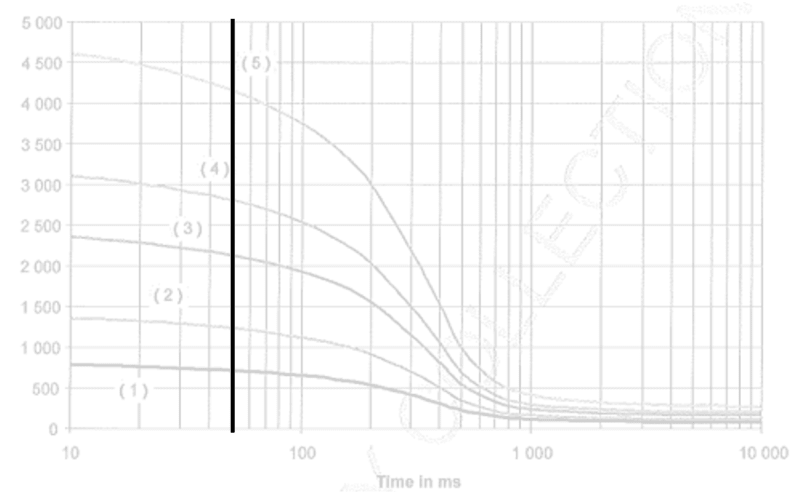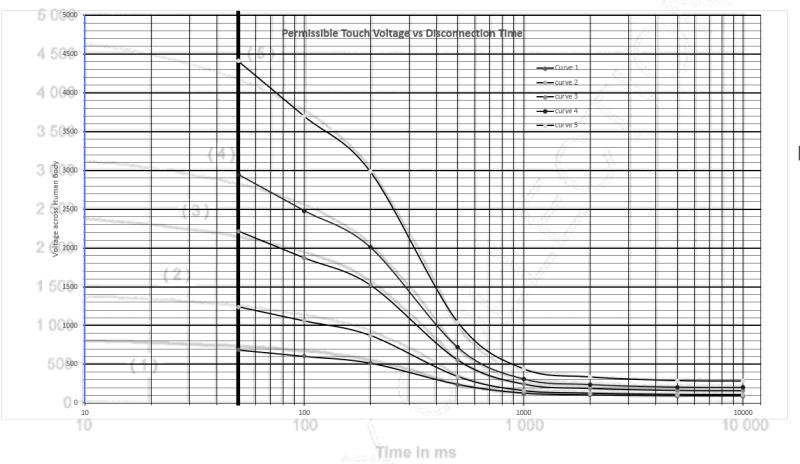Hi all,
I have searched the forum and found a few threads about the permissible touch voltage calculations but the threads do not answer my question so I would like to ask here.
I wanted to calculate the permissible touch voltage as per EN 50522 and/or IEC 60479.
Referring to annexe A of EN 50522, I can see that the permissible touch voltage is calculated using 4 weighted values. I understand that. However, how does one determine the boy resistance in each case?
So if I understand correctly, using a disconnection time of 0.05sec for instance, we need to run 4 calculations and then obtain the weighted values.
Case 1
Ib = 900mA, HF = 1.0, BF = 0.75, Weighted = 1
So Utp = Ib(tf) x 1/HF x ZT(UT) x BF
and weighted value then becomes Utp x 1
Case 2
Ib = 900mA, HF = 1.0, BF = 0.5, Weighted = 1
So Utp = Ib(tf) x 1/HF x ZT(UT) x BF
and weighted value then becomes Utp x 1
Case 3
Ib = 900mA, HF = 0.8, BF = 0.75, Weighted = 1
So Utp = Ib(tf) x 1/HF x ZT(UT) x BF
and weighted value then becomes Utp x 1
Case 4
Ib = 900mA, HF = 0.4, BF = 1.0, Weighted = 0.7
So Utp = Ib(tf) x 1/HF x ZT(UT) x BF
and weighted value then becomes Utp x 0.7
And then get the average value of the calculated Utp from above.
The question is, how do we get the body resistance ZT(UT) in the first place?
Thanks for any insight!
Cheers
I have searched the forum and found a few threads about the permissible touch voltage calculations but the threads do not answer my question so I would like to ask here.
I wanted to calculate the permissible touch voltage as per EN 50522 and/or IEC 60479.
Referring to annexe A of EN 50522, I can see that the permissible touch voltage is calculated using 4 weighted values. I understand that. However, how does one determine the boy resistance in each case?
So if I understand correctly, using a disconnection time of 0.05sec for instance, we need to run 4 calculations and then obtain the weighted values.
Case 1
Ib = 900mA, HF = 1.0, BF = 0.75, Weighted = 1
So Utp = Ib(tf) x 1/HF x ZT(UT) x BF
and weighted value then becomes Utp x 1
Case 2
Ib = 900mA, HF = 1.0, BF = 0.5, Weighted = 1
So Utp = Ib(tf) x 1/HF x ZT(UT) x BF
and weighted value then becomes Utp x 1
Case 3
Ib = 900mA, HF = 0.8, BF = 0.75, Weighted = 1
So Utp = Ib(tf) x 1/HF x ZT(UT) x BF
and weighted value then becomes Utp x 1
Case 4
Ib = 900mA, HF = 0.4, BF = 1.0, Weighted = 0.7
So Utp = Ib(tf) x 1/HF x ZT(UT) x BF
and weighted value then becomes Utp x 0.7
And then get the average value of the calculated Utp from above.
The question is, how do we get the body resistance ZT(UT) in the first place?
Thanks for any insight!
Cheers

